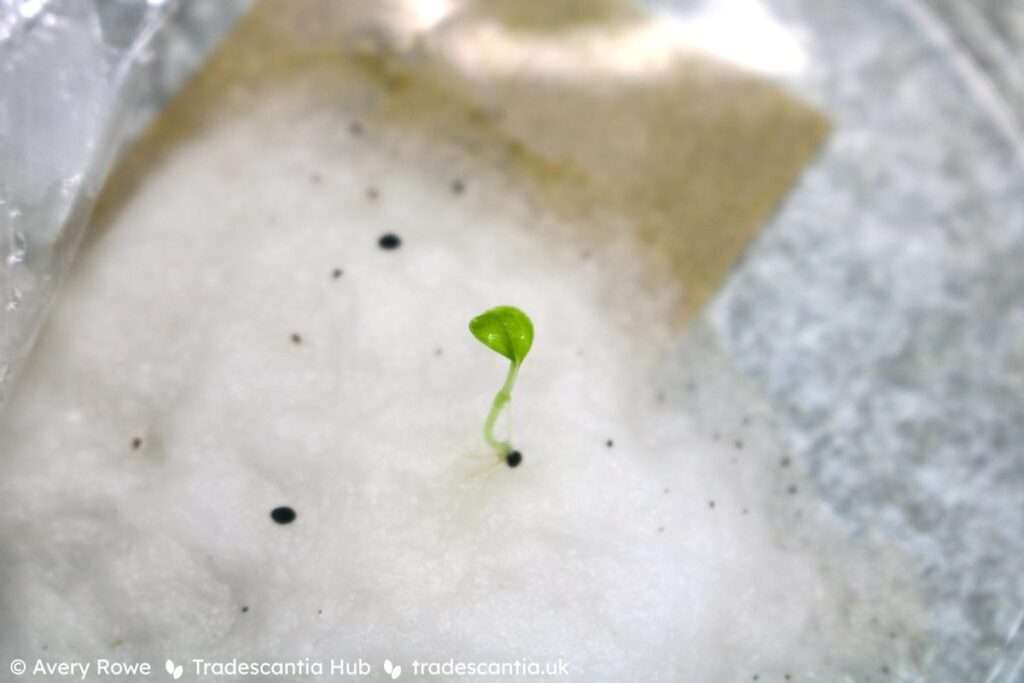Can You Grow Strawberries in Texas? Yes, you can. Strawberries thrive in well-drained, slightly acidic sandy soils, making them well-suited for Texas.
Texas offers a fertile ground for this delicious fruit due to its conducive climate and soil conditions. You can enjoy a bountiful harvest of sweet, juicy strawberries in your Texas garden with proper care and attention. From Austin to San Antonio, the strawberry varieties like ‘Chandler’, ‘Douglas’, and ‘Camarosa’ are recommended for successful cultivation.
Whether you’re a seasoned gardener or a beginner, growing strawberries in Texas can be a rewarding and enjoyable experience. Follow some basic principles of soil preparation and planting, and soon, you’ll be indulging in your homegrown strawberries, fresh from the Lone Star State.

Best Strawberry Varieties For Texas
Texas’s diverse climate makes it a challenging but rewarding location for growing strawberries. When choosing strawberry varieties for a Texas garden, selecting those that can withstand the state’s climate and soil conditions is crucial. In this guide, we’ll explore the best strawberry varieties for Texas and their specific growing requirements to help you enjoy fresh, juicy strawberries from your backyard.
Spring-bearing Varieties
Spring-bearing strawberry varieties are well-suited for Texas gardens. These varieties produce a single, large crop of berries in the spring, making them ideal for gardeners who want a concentrated harvest.
June-bearing Varieties
June-bearing strawberry varieties are also well-suited for the Texas climate. They typically yield a single large crop in late spring to early summer. These varieties are favored for their abundant harvest and are a good choice for preserving or enjoying fresh strawberries in early summer.
Optimal Growing Conditions
Soil And Temperature Requirements
Strawberries in Texas thrive in well-drained soil like sandy loams. They prefer slightly acidic conditions, limiting commercial production potential in Travis County soils. Strawberries also require average temperatures of 60 to 80°F for optimal growth.
Watering And Mulching Tips
Ensure strawberries receive 1-1.5 inches of water weekly, especially during fruit development. Mulching helps retain soil moisture and control weeds. Organic mulches like straw or pine needles benefit strawberry plants in Texas.
Challenges Of Growing Strawberries In Texas
While Texas offers suitable conditions for growing strawberries, there are several challenges that gardeners in the state face.
Dealing With Fire Ants
One of the main challenges gardeners face when growing strawberries in Texas is dealing with fire ants. These tiny insects can quickly infest strawberry plants and cause damage to both the foliage and fruits. Fortunately, effective methods exist to control fire ants and protect strawberry plants.
One method is to use orange oil to kill fire ants. Orange oil is a natural and eco-friendly solution that can effectively eliminate fire ants without harming the strawberry plants. Applying orange oil around the base of the plants can deter fire ants and prevent them from causing damage.
Follow the instructions when applying orange oil, as excessive use can harm the plants. Additionally, be cautious when handling orange oil, as it can cause skin irritation.
Dealing With Harsh Summers
Another significant challenge in growing strawberries in Texas is the harsh summers. High temperatures and intense sunlight can stress strawberry plants and affect their growth and fruit production.
To protect strawberry plants from the harsh Texas summers, there are several practices gardeners can follow:
- Provide shade: Using shade cloth or planting strawberries in a partially shaded area can help protect the plants from direct sunlight and reduce the risk of heat stress.
- Mulching: Applying a layer of mulch around the plants helps retain moisture in the soil and regulates soil temperature.
- Proper watering: Strawberries require consistent moisture, especially during the hot summer. Watering them regularly is important, ensuring the soil is evenly moist but not soggy.
By implementing these practices, gardeners can help their strawberry plants withstand the challenges of Texas’s harsh summers and increase their chances of a successful harvest.
Planting And Caring For Strawberries In Different Texas Regions
Discover the secrets of growing juicy strawberries in diverse Texas regions. Unleash your green thumb with plenty of tips for planting and nurturing these sweet fruits in Austin, San Antonio, and beyond. Engage in the joy of harvesting your own delectable Texas-grown strawberries.
Austin And San Antonio
Growing strawberries in Austin and San Antonio requires attention to soil drainage and acidity. Strawberries thrive in well-drained soil, particularly slightly acidic sandy loams. Although commercial production potential may be limited in most Travis County soils, the flavor and productivity of strawberries make them an excellent choice for home gardens.
Houston And Central Texas
For those in Houston and Central Texas, the best time to plant strawberries is late September through early November. This timing ensures an abundant harvest come spring. When growing strawberries here, focus on soil preparation and selecting suitable companion plants. Paying attention to these factors can significantly impact the success of your strawberry cultivation.
Conclusion And Harvesting Tips
Growing strawberries in Texas can be a gratifying experience, providing a fresh and flavorful treat right from your backyard. However, before indulging in the bountiful harvest, it’s essential to consider some final tips for successful harvesting. As you embark on this journey, it’s crucial to familiarize yourself with the optimal ways to nurture your strawberry plants and savor the results of your hard work. Here are some essential tips to ensure a successful harvest and make the most of your homegrown strawberries.
Final Tips For A Successful Harvest
- Regular Inspection: Check your strawberry plants frequently for signs of pests, diseases, or overripeness. Addressing these issues promptly can help maintain the health of your plants and the quality of your strawberries.
- Proper Watering: Ensure your strawberry plants receive adequate water, especially during dry spells. Consistent and thorough watering is crucial for promoting the growth of plump and juicy strawberries.
- Protect from Birds: Install bird netting or use other protective measures to shield your ripening strawberries from hungry birds. This will ensure that you can enjoy the fruits of your labor before they do.
- Timely Harvesting: Harvest your strawberries as soon as they ripen, preferably in the morning when they are at their sweetest. Be gentle when picking to avoid damaging the fragile fruits.
Enjoying Your Homegrown Strawberries
Now that you’ve mastered the art of growing and harvesting strawberries, it’s time to relish the delicious rewards of your efforts. Whether eaten fresh, with other fruits in a delightful salad, or incorporated into delectable desserts, your homegrown strawberries will elevate your culinary creations and bring joy to your taste buds.

Frequently Asked Questions Of Can You Grow Strawberries In Texas
What Month Do You Plant Strawberries In Texas?
Strawberries should be planted in Texas from late September to early November for the best results. This timing ensures a plentiful harvest in the following spring. Strawberries thrive in well-drained soil, particularly slightly acidic sandy loams, and are known for their exceptional flavor and productivity.
Recommended varieties for Texas include ‘Chandler’, ‘Douglas’, ‘Camarosa’, ‘Sequoia’, ‘Festival’, ‘Oso Grande’, ‘Radiance’, ‘Camino Real’, and ‘Benicia’. In Houston, it is best to opt for June-bearing varieties as they are more suitable for the local climate.
How Well Do Strawberries Grow In Texas?
Strawberries grow well in Texas, especially in Austin. They adapt to well-drained soil and prefer slightly acidic sandy loams. While commercial production is limited due to soil conditions, they are unmatched in flavor and productivity. Spring-bearing varieties like ‘Chandler’ and ‘Douglas’ are recommended for Texas.
Houston is best suited for June-bearing strawberries due to the harsh summer climate.
What Are The Best Strawberries For Texas?
The best strawberry varieties for Texas are ‘Chandler’, ‘Douglas’, ‘Camarosa’, and ‘Sequoia’ for optimal growth in the state. Total words: 18
Can You Grow Strawberries In Houston?
Yes, you can grow strawberries in Houston, particularly June-bearing varieties. They thrive in well-drained soil and need protection from harsh summers.
Can You Grow Strawberries In Texas?
Strawberries can be grown in Texas, particularly in well-drained soil with slightly acidic sandy loams. They are well adapted to the climate and can thrive if properly maintained.
What Is The Best Time To Plant Strawberries In Texas?
The ideal time to plant strawberries in Texas is late September through early November. This gives the plants enough time to establish roots and ensures a bountiful harvest in the following spring.
Conclusion
Strawberries can thrive in Texas with the right soil and care. Choose suitable varieties for success. Experiment and enjoy growing your delicious strawberries in Texas!


